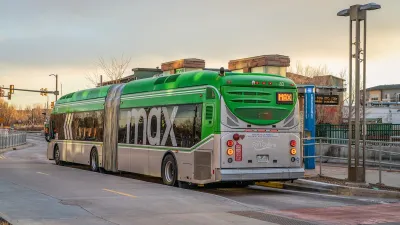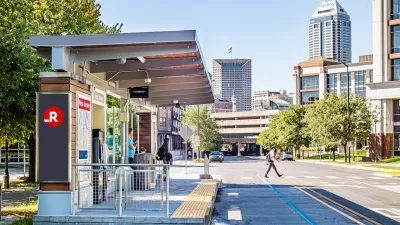Despite being the nation’s 14th largest city, Columbus, Ohio has no high-capacity transit. That could change this November as city officials put a levy before voters that would provide $6.2 billion by 2050 to fund an ambitious bus rapid transit system.

“You'd think with a nickname like ‘Cbus,’ the city would have state-of-the-art public transportation,” begins an article by Columbus Dispatch investigative reporter Jordan Laird. But the truth is, despite being the nation’s 14th largest city, it is the most populous in America without high-capacity transit. The city is served only by Central Ohio Transit Authority buses, which come so infrequently it can take hours to get across the city. City leaders are looking to change that. “Local officials want to catch up to other cities — not by train as local transit enthusiasts have long asked — but by bus. A proposed bus system overhaul could improve service and focus residential and business growth along high-speed bus lines, according to proponents,” Laird reports, and they’re putting it to voters on the November 5 ballot in the form of a levy that would raise COTA’s share of local sales tax from a half-percent to 1 percent and bring in an estimated $6.2 billion by 2050.
The plan, called LinkUS, has been several years in the works. It would build three COTA rapid transit bus lines by 2030, with at least another two planned for later dates. “In addition, LinkUS would also fund 45% more regular bus service; expand a COTA program for cheap rideshare options similar to Uber; and pay to build more than 500 miles of bike paths, sidewalks and trails across Franklin County by 2050.” The move comes as, like many cities across the U.S., bus ridership remains low after the pandemic; “COTA gave 11.12 million rides in 2023, compared to 19.4 million in 2019,” Laird reports. But the city has grown rapidly over the past two decades and that’s anticipated to continue. City officials see it as a preventative measure to rising housing costs and a way to concentrate growth along specific corridors.
The Dispatch article goes into detail about the proposed routes, the deliverables for the BRT plan, service frequency, and more, as well as the city’s reasoning behind choosing BRT and not light rail.
FULL STORY: What to know about COTA levy: Columbus wants to catch up to other cities with rapid bus lines

Alabama: Trump Terminates Settlements for Black Communities Harmed By Raw Sewage
Trump deemed the landmark civil rights agreement “illegal DEI and environmental justice policy.”

Planetizen Federal Action Tracker
A weekly monitor of how Trump’s orders and actions are impacting planners and planning in America.

The 120 Year Old Tiny Home Villages That Sheltered San Francisco’s Earthquake Refugees
More than a century ago, San Francisco mobilized to house thousands of residents displaced by the 1906 earthquake. Could their strategy offer a model for the present?

In Both Crashes and Crime, Public Transportation is Far Safer than Driving
Contrary to popular assumptions, public transportation has far lower crash and crime rates than automobile travel. For safer communities, improve and encourage transit travel.

Report: Zoning Reforms Should Complement Nashville’s Ambitious Transit Plan
Without reform, restrictive zoning codes will limit the impact of the city’s planned transit expansion and could exclude some of the residents who depend on transit the most.

Judge Orders Release of Frozen IRA, IIJA Funding
The decision is a victory for environmental groups who charged that freezing funds for critical infrastructure and disaster response programs caused “real and irreparable harm” to communities.
Urban Design for Planners 1: Software Tools
This six-course series explores essential urban design concepts using open source software and equips planners with the tools they need to participate fully in the urban design process.
Planning for Universal Design
Learn the tools for implementing Universal Design in planning regulations.
Clanton & Associates, Inc.
Jessamine County Fiscal Court
Institute for Housing and Urban Development Studies (IHS)
City of Grandview
Harvard GSD Executive Education
Toledo-Lucas County Plan Commissions
Salt Lake City
NYU Wagner Graduate School of Public Service





























